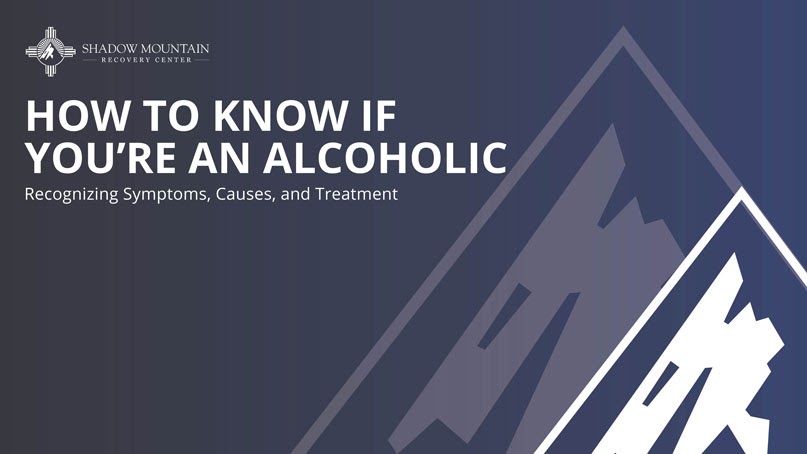How to Know if You’re an Alcoholic
Maybe you’ve heard that phrase “The hair of the dog that bit you.” Sometimes it gets shortened to “The hair of the dog.” If you haven’t, well, it means you need a little of the thing that hurt you in order to get back to feeling okay. Doesn’t really make any sense, but it’s a memorable saying, right?
It’s definitely something I’ve said a bunch of times in the past. I’ve said it when my head was throbbing, when my mouth was dry and crackling under my words, and when I could feel every ray of light slamming into my eyes like they were invisible and impossibly fast rockets that would explode against my brain.
“Hair of the dog,” I said, and reached for the bottle again. I’m ashamed now to say how often I’d laugh at the situation. Bottles and cans would be decorating the end tables and the floors. There was always some mess to clean up. I saw all of those things as the signs of a good time.
Sounds dramatic, I know, but the laughs started becoming more and more rare. I’d stop saying that phrase and just find a bottle or can. That sip of beer or whiskey—or whatever I’d had the night before—would wake me up. It would bring me around, get me going again. It took longer than I’m proud of now, but one day I woke up and said another phrase:
“Am I an alcoholic?”
Do I Have a Drinking Problem? What Are the Signs and Literal Definition of Alcoholism?
Alcohol is listed by the Substance Abuse and Mental Health Services Administration (SAMHSA) as one of the most often consumed as well as misused substances within the United States. What does that mean, exactly? According to a 2019 survey by the National Institutes of Alcohol Abuse and Alcoholism (NIAAA), nearly 90% of people over the age of 18 said they’d drank alcohol in their lifetime, and almost 70% said they had drank in the past year.
That covers regular consumption, but what about “misuse,” and what exactly does that mean? Misuse can have quite a few definitions, as you’ll see, but the main one relates to alcohol use disorder (AUD), sometimes referred to as alcoholism. And another study by the NIAAA showcased the problem with hard numbers.
For adults that were 18-years old or above, the 2019 National Survey On Drug Use and Health showed that an astonishing 14.1 million people were struggling with AUD. On top of that the study also found over 400,000 young people between the ages of 12 and 17 were also dealing with AUD.
So, what exactly is alcoholism, or AUD? How is an addiction to alcohol being defined? The NIAAA defines it as: “Alcohol use disorder (AUD) is a medical condition characterized by an impaired ability to stop or control alcohol use despite adverse social, occupational, or health consequences.”
They go on to specify that this includes multiple levels of drinking and relationships with alcohol, which we’ll also help you understand. One of the reasons this can be so confusing is not everyone reacts the same way to alcohol or other drugs and substances. It’s natural for all of this information and uncertainty to lead to asking yourself or someone else if you are in fact an alcoholic.
Your Health: When Is It Alcohol Addiction and How Can I Tell?
Trying to find out if you are drinking too much and if you may be addicted isn’t always easy. Not only because we know so many people within America are drinking, but also because alcohol is legal and seen as a normal part of life in our country and many others around the world.
So, how do we have any idea what is too much or too often?
Well, the first thing to remember is that there will be a bit of wiggle room, so to speak, depending on the person. Alcohol can affect one person differently than another, so inebriation (a fancy word for being drunk) could happen to you quicker (or take longer) than it would to someone else.
But there are actual guidelines set by health institutes within the United States. In fact, there are actually levels of alcohol use defined by the NIAAA, which can help you determine your own relationship with alcohol.
Alcohol Consumption Rates, Risks, and Their Definitions
Moderate
This level is based on the dietary guidelines set forth by the United States Department of Health and Human Services. Moderate drinking may include up to a single drink a day for women and up to two for men.
Binge
Related to both an amount of alcohol and the time it’s consumed in, binge-drinking is defined by consuming a large amount in a relatively short amount of time. Binge-drinking is thought of quite a bit in relation to college campuses and has been seen to bring drastic effects such as alcohol poisoning and even death. Although the measurements of the drinks are listed by the NIAA, the amount roughly corresponds to drinking five drinks (males) and four drinks (females) within two hours.
Heavy
There are two separate definitions of this, one from the NIAAA and the other from SAMHSA. The first definition states that drinking more than four drinks on any day is considered heavy drinking for a man, and three drinks for a woman. SAMHSA utilizes the frequency of binge-drinking as their measurement and states that anyone binge drinking for five or more days in a month qualifies as having drank heavily.
Alcohol Abuse and Addiction: Deciding When To Stop
Is there anything up there that reminds you of your current situation? Are you finding it hard to not have a drink in the morning? Or maybe at dinner you cannot imagine drinking something other than a glass of wine or a beer. Do you have one drink and know you will continue drinking until you black out?
Like you just read, if you physically cannot stop yourself from drinking, or if you find that you lose control when you do drink, you may in fact have a problem with alcohol. The NIAAA says that heavy drinking and binge-drinking put people at a greater risk for developing an addiction to alcohol, you should know how many drinks is too much.
If you are still wondering if you are addicted to alcohol, try asking yourself these questions. “Can I stop drinking? Do I need alcohol to function? What happens when I don’t drink? When was the last day I didn’t drink?”
Those questions may have difficult answers, but they will put you one step closer to knowing where you stand with alcohol. If you think it may be time to stop drinking and to recover from alcohol use, please know you are capable of doing both things. And you don’t have to do them alone.
Shadow Mountain Recovery Can Help Answer Your Questions about Alcohol Addiction
Recovering from addiction is not easy, and it is not always a straight or even knowable path. That’s why we’re here. We know what it’s like to wonder if you’re addicted and to struggle with the idea of what recovery means. We know how scary it is to see the changes you’ll need to make in your life and to feel that they are impossible.
They are not impossible. You can detox from alcohol safely and comfortably in our medically-supervised recovery environment, and you can begin your lifelong recovery with the help of our evidence-based care and alternatives to 12-step programs. But because we have your recovery as the main goal, if you’d like a 12-step program we can do that too.
Across all four of our locations we are dedicated to helping you find your way past addiction and on into long-term recovery. No questions you have about your current situation are wrong or mean you are incapable of recovering. Call us today at 505-657-2117, and we can help you with whatever your next step is.
Frequently Asked Questions About Alcohol Abuse and Risks
How Does It Feel To Be an Alcoholic?
It may feel different from one person to the next but one of the common aspects is being unable to stop drinking. Whether this means you have to drink every day or that once you begin drinking you cannot stop, alcoholism (also called alcohol use disorder, or AUD) is characterized by feeling as if you need alcohol. Someone may feel out of control without alcohol, and they may develop side effects like sweating, tremors, or even hallucinations.
Who Is Considered an Alcoholic?
An alcoholic is defined as someone who has “…an impaired ability to stop or control alcohol use despite adverse social, occupational, or health consequences.” This means obtaining and drinking alcohol becomes the most important factor for someone and can sometimes mean without alcohol they are dealing with worsening symptoms of withdrawal.
What Happens To Your Body if You Are an Alcoholic?
One of the first things often referenced as a side effect of alcohol is liver damage. It can lead to total liver failure if alcohol is used for a long period of time. Along with that, alcohol can lead to heart problems like arrhythmia as well as high blood pressure, both of which can lead to stroke. The NIAA also lists cancer as a possible outcome as well.
How Do I Know I Am an Alcoholic?
If you cannot stop yourself from drinking or cannot control the amount you drink, that is a good sign you are an alcoholic. If you are losing money, seeing negative repercussions from your drinking such as losing your job or having relationships ending, that is also a sign as well. If you are worried that you are an alcoholic there may be a reason, and depending on how long and how much you have been drinking, you should contact a medical professional before making decisions about stopping. Quitting alcohol can come with dangerous side effects, some that are even life-threatening, so please keep in mind your health and safety when considering your options for recovery.









